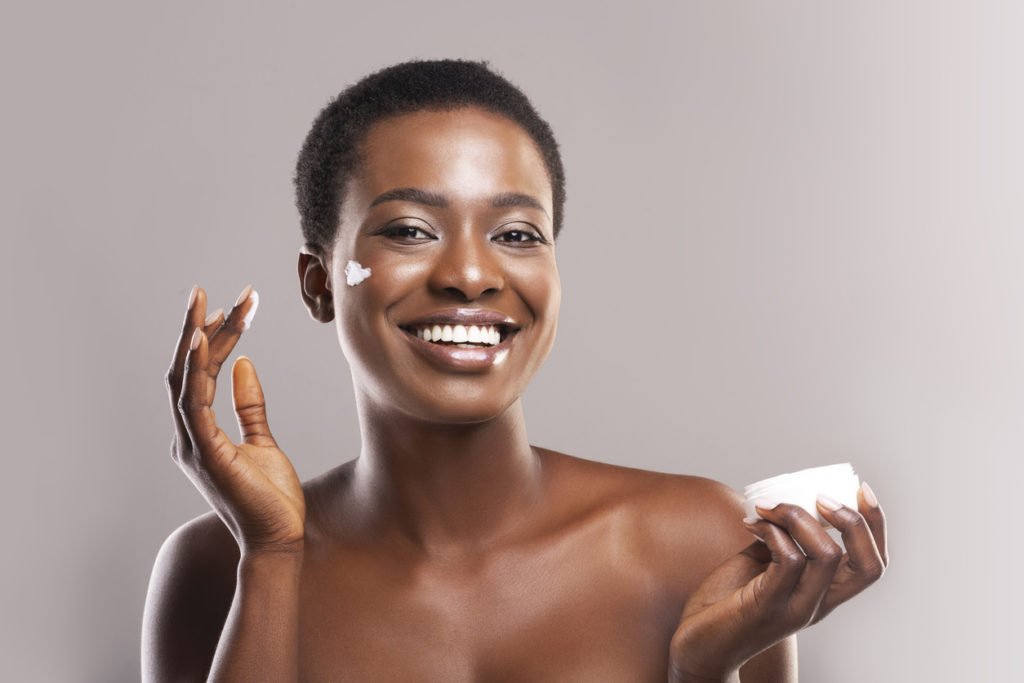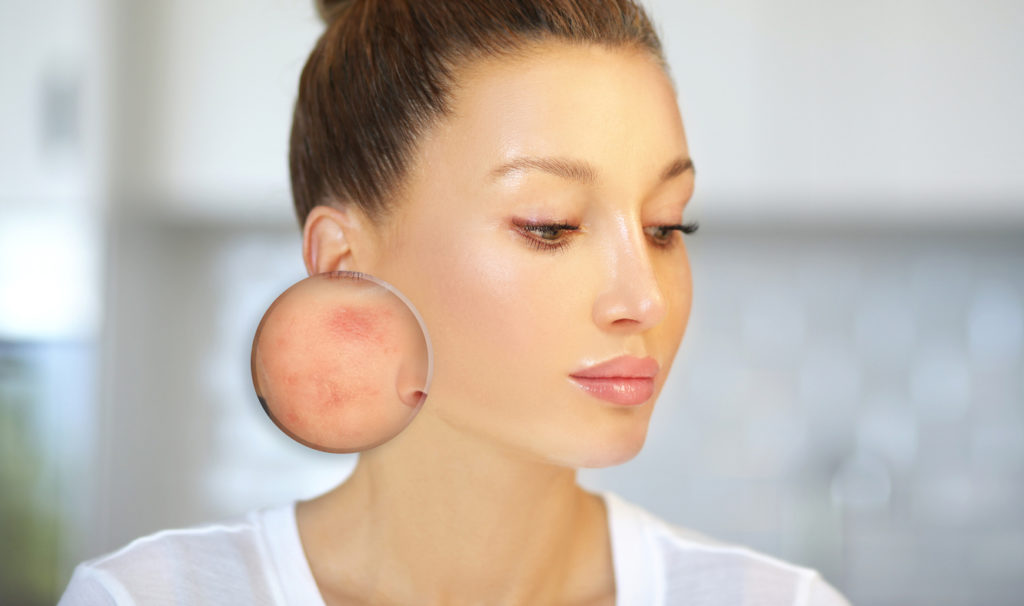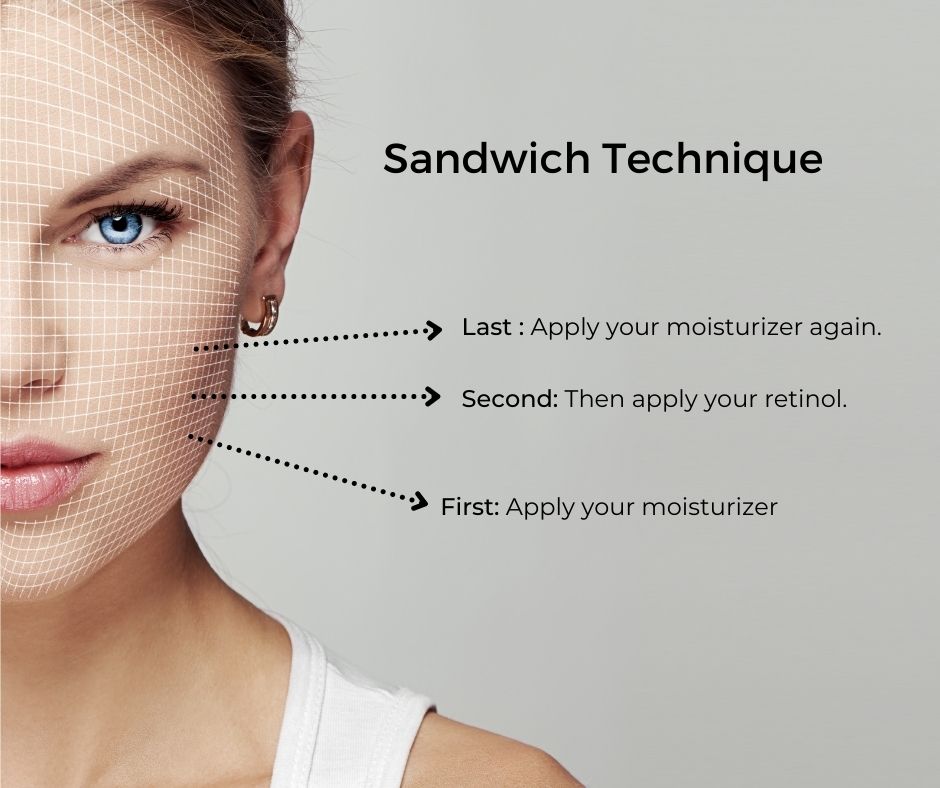Having A Hard Time Tolerating Retinols? This Dermatologist-Approved Hack Will Help
6 Comments
Tracy Teel
Mar 26, 2021
Reap the rewards of this skin-plumping, line-smoothing hero – without the redness and flakes.
Are you the type of person who takes stock of your accomplishments at year-end? What about the things left on your “to do” list? One New Year’s resolution many of us make includes committing ourselves to an anti-aging skincare routine. After all, photos don’t lie – especially the ones we’d rather forget.

In a recent interview with the Beautytap Talks Team, Dr. Tess Mauricio, a Stanford-educated, board-certified dermatologist, explained that retinol’s popularity lies in its multitasking abilities to:
- Increase cell turnover
- Treat hyperpigmentation
- Improve elasticity
- Reduce wrinkles
- Plump skin
Sounds perfect, right? Just go to the store or dermatologist, buy the latest and greatest retinoid product, and watch the years fade away. Unfortunately, it’s rarely that simple.
Retinol products may be tough to tolerate. They can make your skin look flaky and red while feeling irritated and inflamed – the exact opposite of what you’re hoping to achieve. I’ve personally had days when the very thought of applying water to my skin made me cringe because my anti-aging products were so aggravating. Such is the case for a lot of people because skincare products, especially those with active ingredients that “create messengers in your skin to [make it] behave like it did when it was younger,” wreak havoc when you introduce them too aggressively. Instead of giving up on a potentially promising solution because of an early adverse reaction, take some lessons from Dr. Tess Mauricio.
“The race is not always to the swift.” — Aesop
Of all the fables I recall from childhood, “The Hare & the Tortoise” pops into my head every time I impatiently attempt to rush the anti-aging process. Phrases like Aesop’s, which we’ve come to understand as “slow and steady wins the race,” are something to take to heart considering that the advice has been around for 15 centuries, AND we are talking about our skin here.
In modern terms, particularly where retinol is concerned, Dr. Tess says, “You want the efficacy, but you also want to be able to tolerate it. When you start using retinol, start off slow – maybe twice a week – for about two weeks or so, and then, if your skin is feeling and looking good, you can move up to every evening.”

Know Which Product You’re Using
That sounds like simplistic advice, but retinoids are not all the same. Prescription retinoids, like tretinoin and isotretinoin, are forms of retinoic acid and are significantly more powerful than over-the-counter retinol. In general, the stronger the retinoid, the better the chances of irritation. When retinol is applied to the skin, it converts to retinoic acid, which reduces its potency, so you’ll have to wait longer to see results. But don’t dismiss it on that factor alone. “The trend towards tretinoin,” Dr. Tess explains, “is probably because it would have a higher efficacy, but there’s also a higher potential for sensitivity and irritation.” Choosing a product you can stick with will (hopefully) yield results in the long run.
An OTC Retinol With a Doctor’s Endorsement
If prescription products don’t sound like your cup of tea, Dr. Tess has an option for you from No 7 Laboratories. “If you want an over-the-counter product that is really inexpensive but highly science-based,” try their Advanced Retinol 1.5% Complex. It has “0.3 percent pure retinol [as well as a] retinol soother” and an encapsulated delivery system, “so it doesn’t create trouble on the surface of the skin.”

The Sandwich Technique Makes All the Difference
Here’s a game-changing notion you may not be aware of – the sandwich technique. Instead of applying retinol to freshly cleansed skin, “apply moisturizer (the bread) first and then apply your retinol (the meat or vegan alternative), so you’re not putting [it against] bare skin that has been stripped of its natural oils.” Top off the retinol with another layer of moisturizer, essentially sandwiching the retinol in between those two layers to decrease the potential for irritation.
So … show of hands. Who’s ready?
Author:
Tracy Teel
Tracy Ann Teel is a full-time freelance writer and the owner of Finesse Writing and Editing LLC. She’s a tutorial writer for San Francisco Globe’s beauty platform, FierceLeague.com, covering everything from skin and hair care to makeup and nail art. She writes for skincare companies, dermatologists, and cosmetic surgeons, and proudly taught at her MFA alma mater, the University of California Irvine, as a member of their adjunct faculty in English. She’s been a textbook reviewer for Prentice Hall, been recognized three consecutive years in the Who’s Who Among America’s Teachers, and has written professionally for 30+ years. Her poetry chapbook Such Dust was published by Finishing Line Press, and her work has appeared in Alaska Quarterly Review, Rattle, Pearl, Kaleidoscope, and Lake Arrowhead Life.
Comments
Loading...